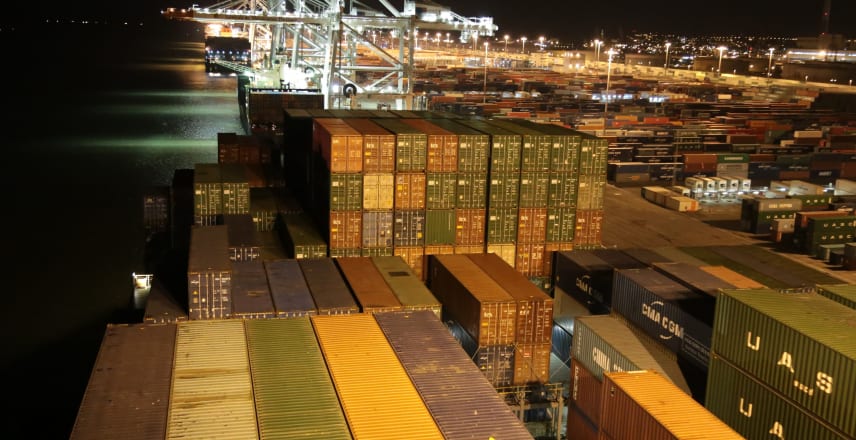Summary
- How to install WordPress with LEMP on Ubuntu
- Step 1. Update your Ubuntu system
- Step 2. Install Nginx web server
- Step 3. Install MySQL database server
- Step 4. Secure your MySQL installation
- Step 5. Install PHP and necessary extensions
- Step 6. Edit the Nginx configuration file
- Step 7. Update the configuration content
- Step 8. Test the Nginx configuration
- Step 9. Restart the Nginx service
- Step 10. Create a new MySQL database and user
- Step 11. Download the latest WordPress installation package
- Step 12. Extract the downloaded file
- Step 13. Copy the extracted WordPress files
- Step 14. Set the correct permissions
- Step 15. Access your WordPress installation
- Step 16. Follow the WordPress installation wizard
- Conclusion
LEMP stack is a popular software stack used for hosting dynamic websites and web applications. LEMP is an acronym for the following software components:
-
Linux - The operating system on which the web server runs. Linux is open-source software and is widely used for web hosting due to its stability and security.
-
Nginx - The web server that handles HTTP requests and serves web pages to clients. Nginx is known for its high performance, scalability, and efficient resource utilization.
-
MySQL/MariaDB - The relational database management system that stores data used by web applications. MySQL/MariaDB is a widely-used open-source database system and is known for its stability, scalability, and security.
-
PHP - The server-side scripting language used to create dynamic web pages and web applications. PHP is widely-used and is known for its ease of use and ability to integrate with various web technologies.
Together, these software components form a complete web application stack that can handle large amounts of traffic and scale easily. The LEMP stack is commonly used for hosting popular content management systems like WordPress, Drupal, and Joomla, as well as custom web applications.
How to install WordPress with LEMP on Ubuntu
Step 1. Update your Ubuntu system
Update your Ubuntu system by running the following commands:
sudo apt update sudo apt upgrade
Step 2. Install Nginx web server
Install Nginx web server by running the following command:
sudo apt install nginx
Step 3. Install MySQL database server
Install MySQL database server by running the following command:
sudo apt install mysql-server
Step 4. Secure your MySQL installation
Secure your MySQL installation by running the following command:
sudo mysql_secure_installation
During the installation, you will be asked to configure some settings. Follow the instructions and answer the questions.
Step 5. Install PHP and necessary extensions
Install PHP and necessary extensions by running the following command:
sudo apt install php-fpm php-mysql php-curl php-gd php-mbstring php-xml php-xmlrpc
Step 6. Edit the Nginx configuration file
Edit the Nginx configuration file by running the following command:
sudo nano /etc/nginx/sites-available/default
Step 7. Update the configuration content
Replace the contents of the file with the following code:
server {
listen 80 default_server;
listen [::]:80 default_server;
root /var/www/html;
index index.php index.html index.htm;
server_name _;
location / {
try_files $uri $uri/ /index.php?$args;
}
location ~ \.php$ {
include snippets/fastcgi-php.conf;
fastcgi_pass unix:/run/php/php7.4-fpm.sock;
}
}
Note: This code is for PHP version 7.4, if you have a different version, update it accordingly.
Step 8. Test the Nginx configuration
Test the Nginx configuration by running the following command:
sudo nginx -t
Step 9. Restart the Nginx service
If there are no errors, restart the Nginx service by running the following command:
sudo systemctl restart nginx
Step 10. Create a new MySQL database and user
Create a new MySQL database and user for WordPress by running the following commands:
sudo mysql -u root -p
Enter the MySQL root password when prompted.
CREATE DATABASE wordpress; CREATE USER 'wordpressuser'@'localhost' IDENTIFIED BY 'password'; GRANT ALL PRIVILEGES ON wordpress.* TO 'wordpressuser'@'localhost'; FLUSH PRIVILEGES; EXIT;
Note: Replace ‘password’ with a strong password of your choice.
Step 11. Download the latest WordPress installation package
Download the latest WordPress installation package by running the following command:
cd /tmp curl -O https://wordpress.org/latest.tar.gz
Step 12. Extract the downloaded file
Extract the downloaded file by running the following command:
tar xzvf latest.tar.gz
Step 13. Copy the extracted WordPress files
Copy the extracted WordPress files to the Nginx document root directory by running the following command:
`sudo cp -r /tmp/wordpress/* /var/www/html`
Step 14. Set the correct permissions
Set the correct permissions and ownership for the WordPress files by running the following commands:
sudo chown -R www-data:www-data /var/www/html sudo chmod -R 755 /var/www/html
Step 15. Access your WordPress installation
Access your WordPress installation by opening a web browser and navigating to your server’s IP address or domain name.
Step 16. Follow the WordPress installation wizard
Follow the WordPress installation wizard and enter the database name, username, and password you created in step 10.
Conclusion
That’s it! You should now have a working WordPress installation with LEMP on Ubuntu.


















